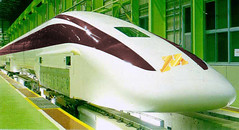 First things first...I had my commencement from the University of Minnesota Sunday May 11th at CLA's morning ceremony. To quote my girlfriend Kristen, who has worked for the graduate school for a number of years, "Commencement does not equal graduation" and I am now one of several thousand University of Minnesota graduates eagerly awaiting my diploma. Kristen, who graduated from CEHD in Family Social Science, had her commencement earlier in the week. I finished out my final semester with a B average, and was pleased with a B- in Financial Accounting and a passing grade in German 1001 having opted to take the class pass/fail in hopes of learning the language a bit before making a return trip to Europe with Kristen sometime in the near future.
First things first...I had my commencement from the University of Minnesota Sunday May 11th at CLA's morning ceremony. To quote my girlfriend Kristen, who has worked for the graduate school for a number of years, "Commencement does not equal graduation" and I am now one of several thousand University of Minnesota graduates eagerly awaiting my diploma. Kristen, who graduated from CEHD in Family Social Science, had her commencement earlier in the week. I finished out my final semester with a B average, and was pleased with a B- in Financial Accounting and a passing grade in German 1001 having opted to take the class pass/fail in hopes of learning the language a bit before making a return trip to Europe with Kristen sometime in the near future.To celebrate, we had some of the family over for Burgers and Cake. Sunday was also Mother's Day, and my mother got a neat present: the Yankee Flipper Bird Feeder. My folks have been battling the squirrels in the backyard, and the flipper is designed to support the weight of birds, however, when a squirrel lands upon the bar, a motor turns on and begins to spin the platform tossing the squirrel off of the feeder.

The second major update is...I got a Job. Tomorrow, Monday May 21st, I start my 4 month paid internship with the City of Minneapolis as a Code Enforcement Field Inspector. I found out a number of weeks ago after filling out several applications, attending interviews, and finally receiving a call that I was offered the job. I am very excited and hope this will lead to other opportunities possibly in the city of Minneapolis or the region.
I have uploaded some new pictures on facebook and on flickr. Kristen and I made our first trip up to Tulaby Lake for the summer and saw all of the work my Dad and Mom have done; replacing the back-bedroom ceiling plaster with wooden panels, painting the walls to add more light, and put in Pergo laminate flooring. The wood flooring replaces the aging carpet and we hope to continue it into the other bedrooms and main hallway before tackling the coming remodel of the Cabin Kitchen. I hope to write a dedicated post with photos to the work that my folks have done with the improvements, as soon as I can grab the photos from my Dad's .Mac Homepage or off of his MacBook at home.
More to come as the summer progresses, I have a couple of topics that I have been meaning to write about bouncing around in my head: What I would do with $120,000 dollars (no saving or investing just straight spending), Green Building and Tax Increment Financing, and whatever else comes into my head.





